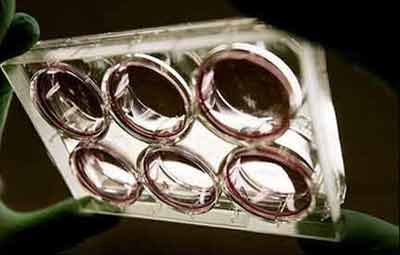Scientists reported on Wednesday that adult stem cells isolated from humans with muscular dystrophy can be genetically corrected and used to induce functional improvement when transplanted into a mouse model of the disease.
The research by a team of researchers from Italy and France, published in the December issue of Cell Stem Cell, represents a significant advance toward the future development of a gene therapy that uses a patient's own cells to treat this devastating muscle-wasting disease.
Scientists reported on Wednesday that adult stem cells isolated from humans with muscular dystrophy can be genetically corrected and used to induce functional improvement when transplanted into a mouse model of the disease.(Yahoo File Photo)
Duchenne muscular dystrophy (DMD) is a hereditary disease caused by a mutation in the gene that codes for a muscle protein called dystrophin. DMD is characterized by a chronic degeneration of skeletal muscle cells that leads to progressive muscle weakness. Although intense research has focused on finding a way to replace the defective dystrophin protein, at this time there is no cure for DMD.
The research team led by Yvan Torrente from the University of Milan used a combination of cell- and gene-based therapy to isolate adult human stem cells from DMD patients. Then they used agenetic technique to repair the mutated dystrophin gene so that dystrophin synthesis was restored.
Importantly, intramuscular or intra-arterial delivery of the genetically corrected muscle stem cells resulted in significant recovery of muscle morphology, function, and dystrophin expression in a mouse model of muscular dystrophy.
"These data demonstrate that genetically engineered stem cells represent a possible tool for future stem cell-based autograft applications in humans with DMD," says Torrente. However, the authors caution that significant additional work needs to be done prior to using this technology in humans.
(Xinhua News Agency December 14, 2007)


